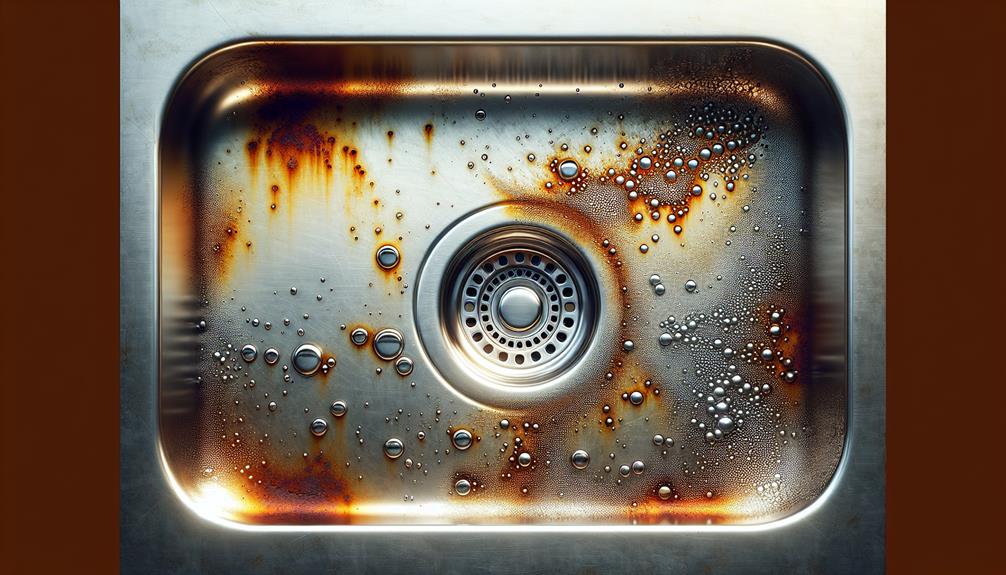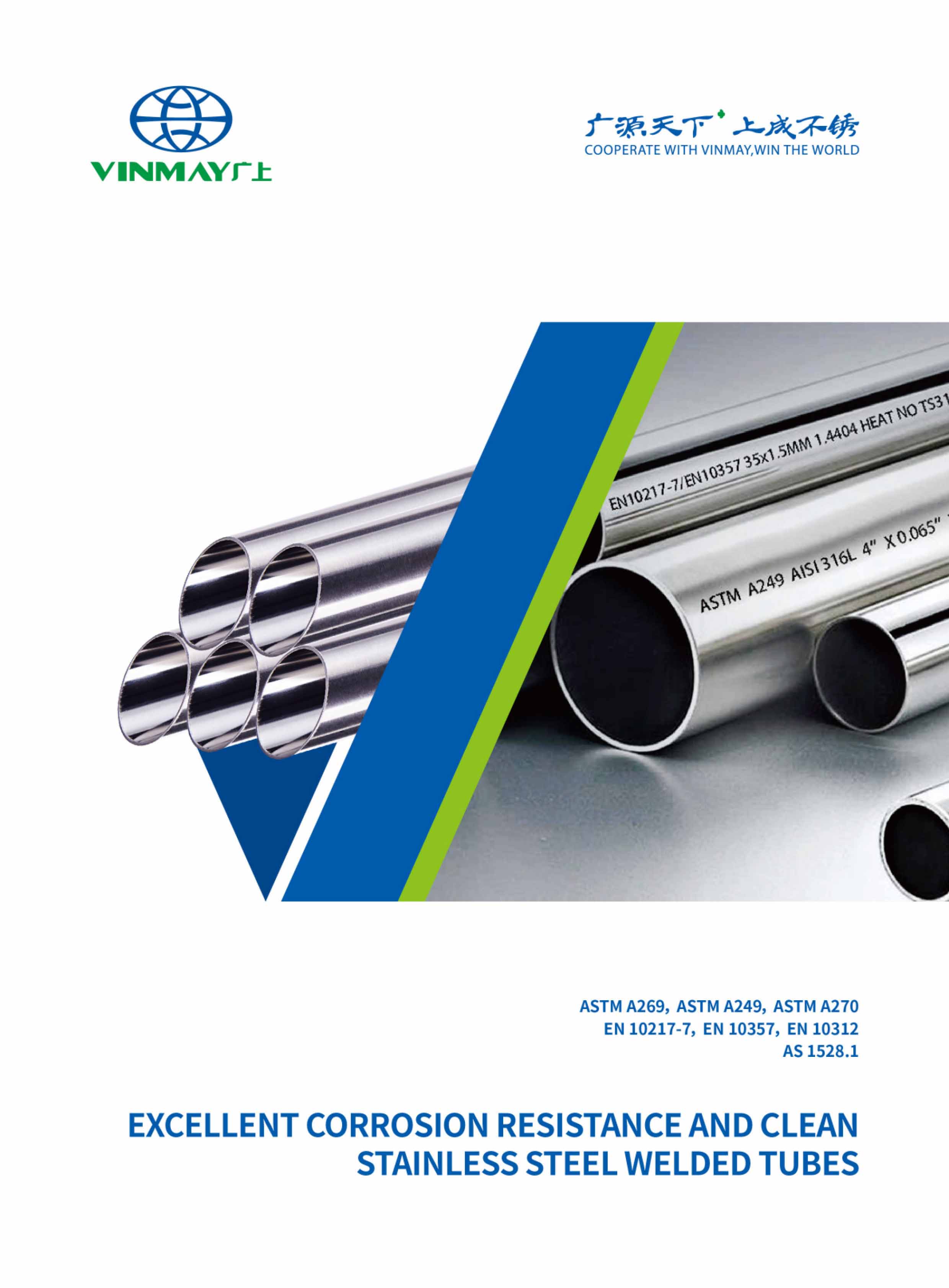The question of will 201 stainless steel rust is a pertinent one in the realm of material science and engineering. Despite its reputation for durability, concerns about potential corrosion remain prevalent.
Understanding the underlying factors that can lead to rust formation on this particular type of stainless steel tube material is essential for anyone working with or relying on its properties. By exploring the nuances of rusting in 201 stainless steel, we can uncover valuable insights that may challenge conventional assumptions and shed light on the best practices for maintaining its pristine condition.

201 stainless steel is characterized by its relatively low cost, making it increasingly popular in engineering and architectural applications due to its lightweight nature and cost efficiency.
Known for its great impact resistance and excellent toughness in cold conditions, it boasts 30% better yield strength than 301 stainless steel while maintaining equal ductility.
Will 201 stainless steel rust? With high corrosion resistance despite its low nickel content, 201 stainless steel is favored for its formability, springing back toward its original shape and proving valuable in various bending and shaping applications.
Will 201 stainless steel rust ? Characterized by its specific chemical composition, 201 stainless steel is a type of steel alloy with distinct properties and applications. It is designed to provide corrosion prevention through the formation of a protective film on its surface, which acts as a barrier against rust formation.
This protective film is crucial in maintaining the steel's surface protection by preventing chemical reactions that could lead to corrosion. Understanding the chemical reactions that can occur on the surface of 201 stainless steel is imperative in ensuring its longevity and effectiveness in various stainless steel pipe applications.
The toughness of 201 stainless steel is a significant aspect of its mechanical properties that contributes to its suitability for various applications in engineering and architecture. This type of stainless steel exhibits exceptional impact resistance, especially in cold conditions. Will 201 stainless steel rust?
When considering springback, 201 stainless steel requires careful attention to bending and shaping processes due to its high springback characteristics. In comparison to other stainless steels, 201 stainless steel boasts excellent toughness, with a 30% better yield strength than 301 stainless steel.
Stainless Steel Pipe Manufacturers need to take into account these unique properties during their manufacturing processes to ensure the optimal performance of 201 stainless steel in the intended applications.
Demonstrating high corrosion resistance relative to other metals, 201 stainless steel is a notable alloy known for its durability and suitability in various applications within engineering and architecture. When considering rust prevention, surface protection, corrosion control, environmental factors, and maintenance tips, it's crucial to understand the properties of this stainless steel type. The table below provides a visual representation of the key aspects to be mindful of:
| Aspect | Importance |
|---|---|
| Rust Prevention | Essential for longevity and aesthetics |
| Surface Protection | Shields against external damaging factors |
| Corrosion Control | Maintains structural integrity |
| Environmental Factors | Influence on material degradation |
| Maintenance Tips | Regular upkeep to prolong lifespan |
In understanding the properties of 201 stainless steel, particularly its formability, it is crucial to acknowledge its high springback characteristics and considerations for bending and shaping in various manufacturing processes.
When working with 201 stainless steel, here are key points to consider:
These factors play a vital role in design details, especially when aiming for precise shapes and when considering surface cladding applications.
You may also like:
Mastering the Art of 201Stainless Steel Welding
Highlighting the Versatility of 201 Stainless Steel in Various Applications:
Known for its cost-effectiveness, toughness, and resistance properties, 201 stainless steel finds diverse 201 stainlesss steel welded pipe applications in automotive, architectural, and infrastructure projects.
With a focus on rust prevention, surface treatment, and corrosion factors, 201 stainless steel is often used in environments where protective coatings are essential.
Its environmental impact is carefully considered, making it a preferred choice for projects requiring durability and longevity.
The ability to withstand harsh conditions while maintaining its structural integrity makes it ideal for applications where exposure to elements is a concern.
Whether in automotive manufacturing, architectural design, or infrastructure development, 201 stainless steel continues to prove its worth in various industries.

The corrosion resistance properties of 201 stainless steel play a crucial role in determining its susceptibility to rust. Despite being resistant to corrosion in various environments, 201 stainless steel is not entirely rust-proof. Factors such as environmental conditions and surface maintenance practices can influence its rust resistance. Will 201 stainless steel rust ?
Rust prevention strategies are essential to prolong the lifespan of 201 stainless steel.
Regular surface maintenance, including cleaning and removing contaminants, can help maintain its corrosion resistance.
Corrosion control measures, such as monitoring environmental factors and applying protective coatings, are crucial in preventing rust formation on 201 stainless steel.
While 201 stainless steel offers good corrosion resistance compared to many other materials, it is not immune to rusting. Therefore, proper care, maintenance, and proactive measures are necessary to preserve its aesthetic appeal and structural integrity over time.
Despite its strong corrosion resistance properties, ASTM 201 stainless steel is susceptible to rust due to various environmental factors and surface conditions. Factors contributing to the rusting of ASTM 201 stainless steel include the accumulation of dust containing other metals, adhesion of organic juices forming organic acids, presence of acids, alkalis, or salts on the surface, exposure to polluted air rich in sulfides, carbon dioxide, or nitrogen oxides, and damage to the protective chromium-rich oxide film on the surface. To address misconceptions, it is crucial to understand that stainless steel can rust under certain conditions, emphasizing the importance of the chromium-rich oxide film in preventing rust. Chemical reactions such as micro-cell formation due to organic juice adhesion, formation of organic acids in the presence of water and oxygen, and localized corrosion caused by acid, alkali, or salt adhesion can lead to corrosion. Environmental impact plays a significant role in the rusting process of ASTM 201 stainless steel.
| Factors Contributing to Rusting | Misconceptions Addressed |
|---|---|
| Accumulation of dust with metals | Stainless steel can rust |
| Adhesion of organic juices forming acids | Importance of oxide film |
| Presence of acids, alkalis, or salts | Environmental impact |
| Exposure to polluted air | Specific conditions for corrosion resistance |
| Damage to protective film | Understanding rust factors |

You may also like: Can 304 Stainless Steel Rust?
The Life Expectancy of 304 Stainless Steel
Stainless steel 201 has been extensively studied, and its impact on human health has been a subject of scientific analysis and scrutiny. Health concerns regarding stainless steel 201 include potential issues related to material toxicity, food safety, and environmental impact.
While stainless steel is generally considered safe for food contact and cooking applications, some health concerns may arise due to the following factors:
Safety regulations play a crucial role in ensuring that stainless steel products meet health standards and do not pose risks to consumers.
The benefits of 201 stainless steel lie in its relatively low cost compared to other stainless steels, making it an economical choice for various applications.
Additionally, its high corrosion resistance ensures durability and longevity in diverse environments.
These advantages position 201 stainless steel as a practical and reliable material for projects that require cost-effectiveness and resistance to rust.
With its relatively low cost and increasing usage in engineering and architecture, 201 stainless steel offers a cost-effective solution for projects requiring a balance of strength and aesthetics.
This stainless steel variant provides a viable option for those seeking a durable material without breaking the bank. Its affordability, combined with its versatility in applications, makes it a compelling choice for projects where cost considerations play a significant role.
Demonstrating remarkable resistance to various corrosive elements, ASTM 201 stainless steel exhibits a robust protective mechanism against oxidation and chemical degradation. Its rust prevention capabilities stem from the formation of a thin, stable chromium-rich oxide film on the surface, which acts as a barrier against oxygen penetration.
Corrosion inhibitors can further enhance its resistance to acid, alkali, and salt mediums. Environmental factors play a crucial role in its corrosion resistance, with exposure to pollutants and certain chemicals potentially compromising its protective properties. Will 201 stainless steel rust?
Regular maintenance, such as cleaning off accumulated dust and adhered organic substances, is essential for ensuring the longevity of the surface protection. By understanding these factors and implementing appropriate maintenance tips, the corrosion resistance of 201 stainless steel can be effectively preserved. Will 201 stainless steel rust?
201 stainless steel is suitable for outdoor applications due to its toughness and corrosion resistance. To maintain, use mild soap and water, avoid abrasive cleaners, and inspect for damage regularly. Its durability withstands weather, ensuring longevity.
201 stainless steel showcases favorable corrosion resistance compared to some grade of stainless steel due to its chromium content. Durability is maintained when considering environmental factors. Proper rust prevention and maintenance enhance longevity, making it suitable for outdoor use.
You may also like:
What Is the Difference Between 201 and 304 Stainless Steel?
Environmental factors like moisture exposure, salt content, temperature fluctuations, air pollution, and chemical exposure can accelerate rusting of ASTM 201 stainless steel. Understanding these elements is crucial for maintaining the material's longevity and integrity.
In conclusion, while 201 stainless steel offers many benefits such as cost-effectiveness and ease of fabrication, it is not completely rust-proof. Factors such as exposure to corrosive environments and lack of proper maintenance can lead to rust formation on ASTM 201 stainless steel.
Understanding the underlying mechanisms of rusting in this type of stainless steel is crucial for maintaining its durability and performance in various applications.
Just like a vigilant guardian protecting a valuable treasure, proper care and maintenance are essential to preserve the integrity of 201 stainless steel components.



